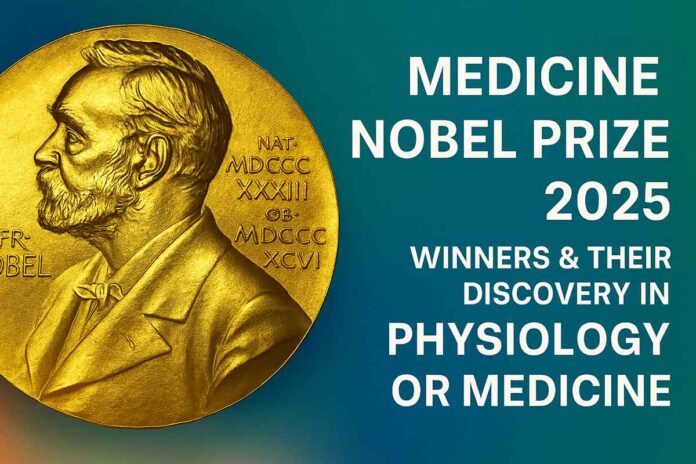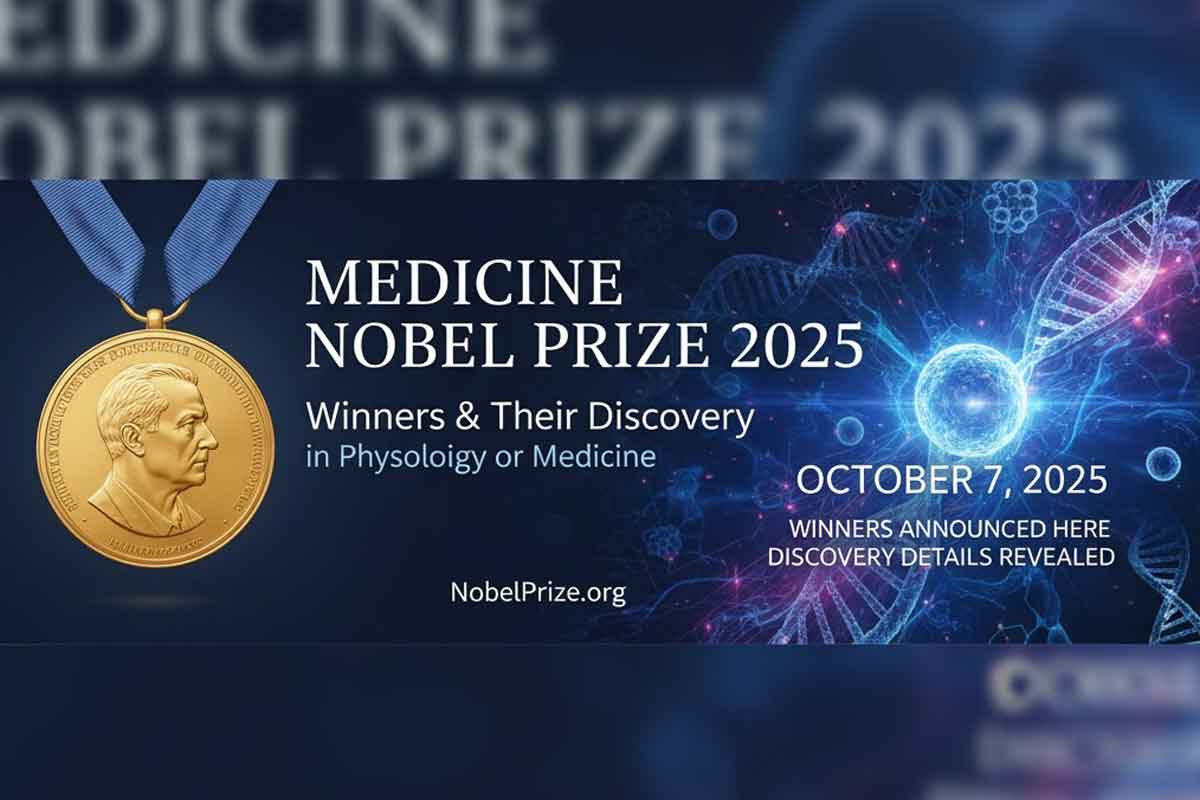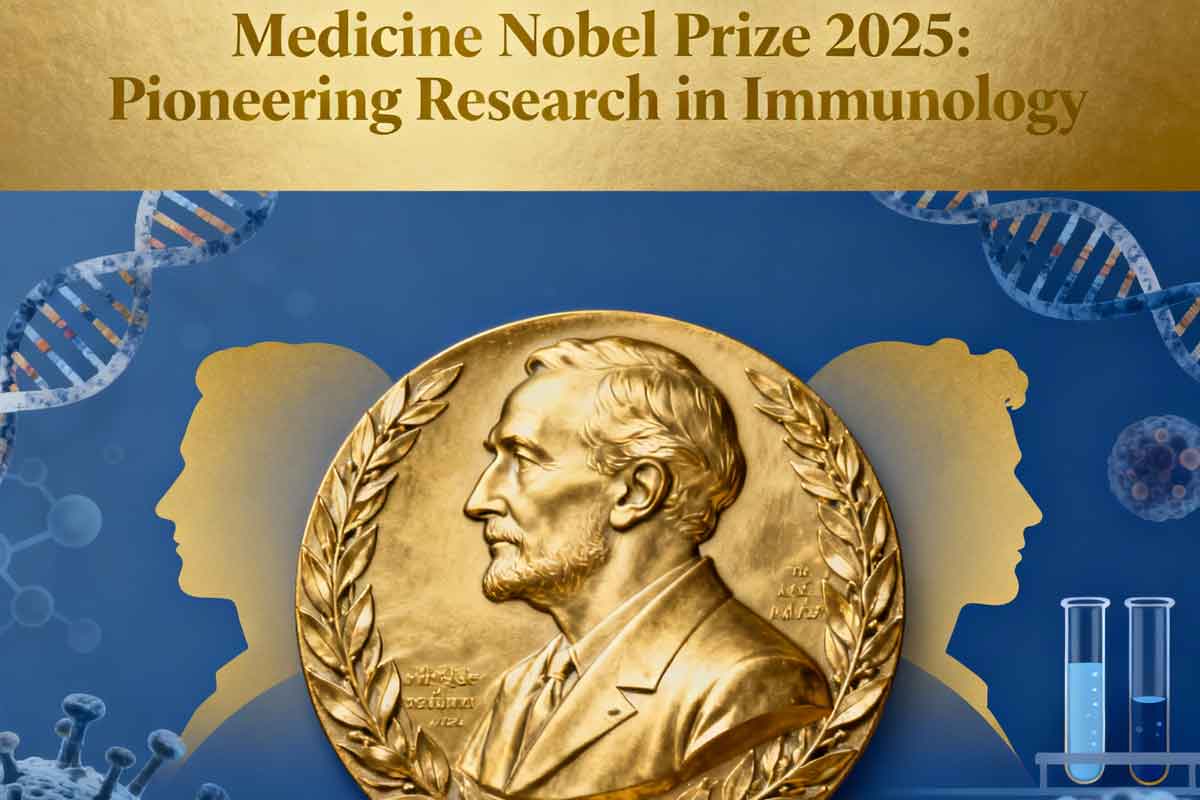The Nobel Prize in Physiology or Medicine, commonly known as the Medicine Nobel Prize, is one of the most prestigious awards in science. Presented annually by the Nobel Assembly at the Karolinska Institutet in Sweden, it recognizes outstanding contributions that advance our understanding of the human body and its functions. The award is traditionally announced in early October, with the formal ceremony held in Stockholm on December 10, the anniversary of Alfred Nobel’s death.
The Medicine Nobel Prize 2025 honors groundbreaking discoveries that have transformed our understanding of how the immune system maintains balance — protecting against infections while preventing attacks on the body’s own tissues.
Winners of the Medicine Nobel Prize 2025
The 2025 Nobel Prize in Physiology or Medicine was jointly awarded to three scientists:
- Mary E. Brunkow (United States)
- Fred Ramsdell (United States)
- Shimon Sakaguchi (Japan)
They received the award “for their discoveries concerning peripheral immune tolerance,” revealing how specialized immune cells, known as regulatory T cells (Tregs), prevent the immune system from attacking healthy cells and tissues.
Winners’ Biographies and Contributions
Mary E. Brunkow
Dr. Mary Brunkow, a molecular biologist from the United States, earned her Ph.D. from Princeton University. She played a crucial role in identifying the FOXP3 gene, which is vital for the development of regulatory T cells. Her work helped uncover how certain genetic mutations can lead to severe autoimmune diseases. Brunkow’s discovery paved the way for potential therapies aimed at enhancing immune tolerance and treating autoimmune disorders.
Fred Ramsdell
Dr. Fred Ramsdell, an immunologist and alumnus of the University of California, Los Angeles (UCLA), collaborated closely with Brunkow in the identification of the FOXP3 gene. His research expanded our understanding of immune regulation and how T cells maintain immune system balance. Interestingly, Ramsdell learned about his Nobel win while hiking in the U.S. mountains during a digital detox — a story that captured global attention.
Shimon Sakaguchi
Professor Shimon Sakaguchi of Kyoto University, Japan, first discovered the concept of regulatory T cells in the 1990s. His pioneering work showed that certain T cells can suppress autoimmune reactions, forming the foundation for today’s understanding of immune tolerance. His decades-long research continues to influence therapies for autoimmune diseases, cancer immunology, and organ transplantation.
Why Their Discovery Matters
The discovery of regulatory T cells revolutionized immunology. It clarified how the immune system differentiates between harmful pathogens and the body’s own cells. This knowledge has opened new possibilities for treating:
- Autoimmune diseases such as type 1 diabetes and rheumatoid arthritis
- Chronic inflammation and allergic disorders
- Organ transplant rejection
- Cancer immunotherapy — by modulating immune suppression
By understanding how Tregs function, scientists are developing targeted drugs that either strengthen immune control in autoimmune diseases or relax it to allow stronger anti-tumor responses in cancer treatment.
Disclaimer
This article summarizes publicly available information about the Nobel Prize in Physiology or Medicine 2025. It is intended for general knowledge and should not replace professional scientific references or official publications from the Nobel Foundation.
FAQs
Q: Who are the winners of the Medicine Nobel Prize 2025?
A: The Nobel Prize in Physiology or Medicine 2025 was awarded to Mary E. Brunkow, Fred Ramsdell, and Shimon Sakaguchi for their discoveries related to immune regulation.
Q: What was their main discovery?
A: They discovered how regulatory T cells (Tregs) control immune tolerance, preventing autoimmune diseases by stopping the immune system from attacking the body’s own tissues.
Q: How will their research impact medicine?
A: Their findings could lead to new treatments for autoimmune diseases, improve transplant success, and aid in developing immunotherapies for cancer and chronic conditions.



